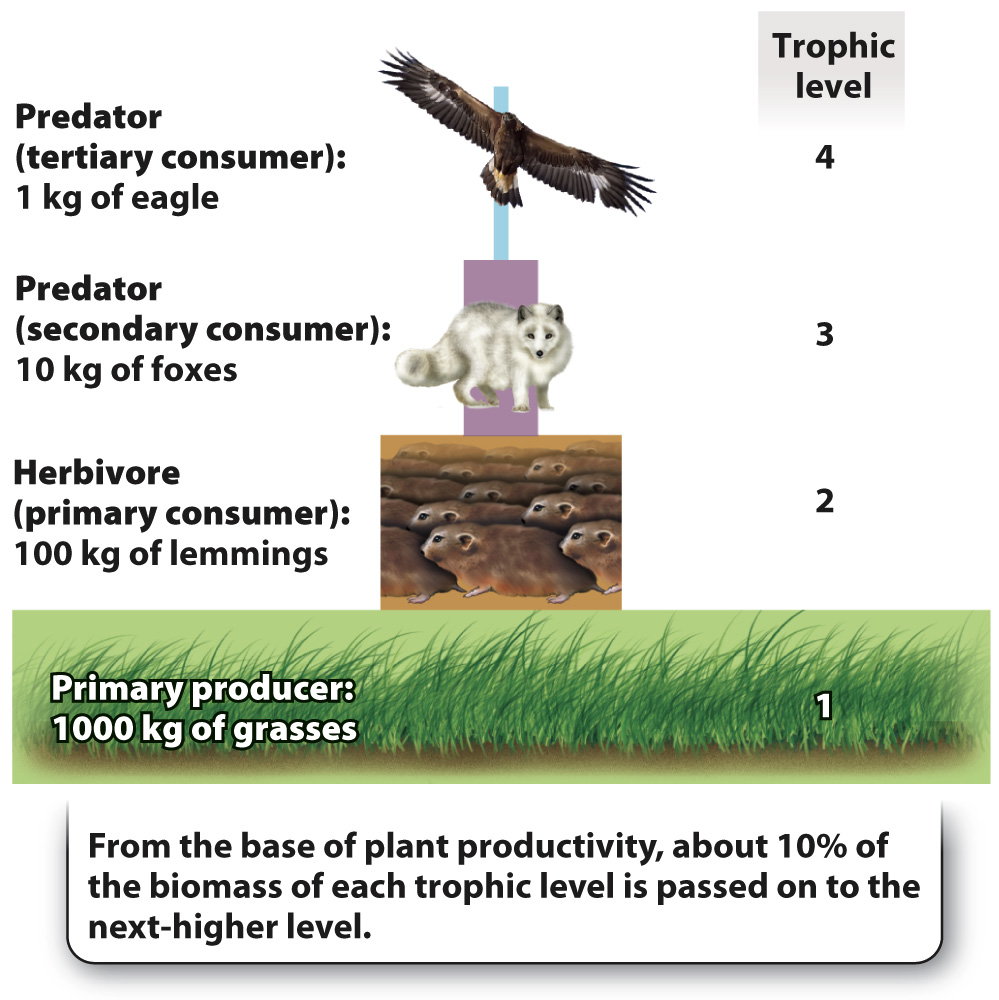Species interactions form trophic pyramids that transfer energy through ecosystems.
The interactions among species transfer energy as well as carbon and other elements through ecosystems. Unlike carbon, energy does not cycle through an ecosystem, and so new energy must continually be harvested from the environment to sustain the community. In essentially all ecosystems where sunlight is available, photosynthesis lies at the heart of ecosystem function. Plants, algae, and photosynthetic bacteria capture energy from the sun and use it to synthesize organic molecules. Where sunlight is absent, especially in the vast depths of ocean, bacteria and archaeons fuel primary production by chemical reactions.
1038
Some of the energy harvested by primary producers is stored as chemical bonds in organic molecules such as carbohydrates (Chapter 8) and so will be available to organisms at the next trophic level. Some, however, will be dissipated as heat or used to do work (Chapter 6). Because building organic molecules is not 100% energy efficient, and because organisms at one trophic level rarely consume all the resources in the level below them, biomass and the energy it represents generally decrease from one trophic level to the next. As plants capture energy from sunlight and carbon from the atmosphere, they build bonds that store energy in molecules of carbon and other nutrients, converting radiant energy into chemical energy. Organisms that consume these organic molecules store some of the energy in other molecules such as fat and starch, but they also use much of the food energy to do work or generate heat. The energy expended as heat or work cannot be captured again by photosynthetic organisms (which require energy as light of only certain wavelengths, Chapter 8). Therefore, while carbon and other elements are recycled in ecosystems, energy transfer is unidirectional.
As we saw, the various producers and consumers in a biological community can be grouped into functionally similar classes, the trophic levels. Diagrams showing the biomass and therefore energy available at each level to feed the next are called trophic pyramids (Fig. 47.17). These diagrams of terrestrial biomass have a pyramid shape because the biomass of primary producers (usually plants) is generally more than that of primary consumers (herbivores), whose biomass is more than that of secondary consumers (the predators of herbivores), and so forth.

This pattern of decreasing biomass occurs because transfer of energy and biomass is inefficient. Because of wastes, work, and heat dissipation, only about 10% of the energy and biomass available at one trophic level is incorporated into the next level. For example, 1000 kg of grass biomass will support about 100 kg of lemmings (about 400 animals), and that, in turn, will support 10 kg of small predators like foxes. At the apex of the pyramid, we find a single kilogram of eagle tissue. In this way, primary production exerts a powerful influence on the rest of the community. To get more foxes and eagles, we would need more photosynthesis.
The shape of the biomass diagram for marine ecosystems is often inverted because the plants are all tiny plankton that reproduce much more rapidly than their consumers do, and so their biomass at any one time may be less than that of consumers present (Chapter 48).